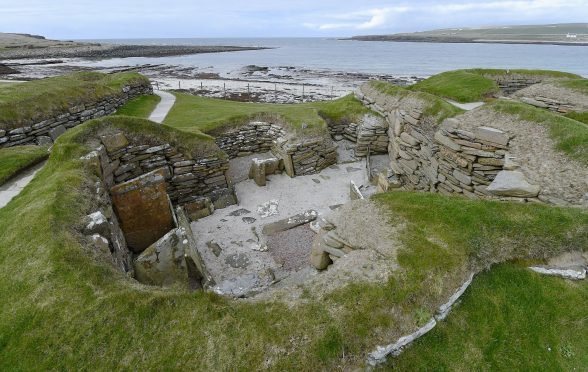The owners of Skara Brae have spoken of their work to prevent coastal erosion destroying the neolithic village – one of Scotland’s “most vulnerable historic sites”.
Historic Environment Scotland face a constant battle to prevent the village from slipping into the Bay of Skaill on the west coast of the Orkney Mainland.
Earlier this week the site was named alongside the city of Venice and the Statue of Liberty as sites most at risk from climate change in a report published by a consortium of concerned scientists.
Coastal erosion at the site is under constant study, with regular monitoring of the nearby beach, dunes and protective sea wall using laser scanning technology.
One of the fears is that the sea wall, which protects Skara Brae from storms, may cause increased erosion to the softer landscape of the sand dunes either side.
The site, which dates back to around 3180 BC, was not originally coastal at all and its discovery was actually down to coastal erosion and storms in 1850 and 1924 – similar to what is now putting the site at risk.
A spokesman for Historic Environment Scotland said: “We welcome this report, which outlines the serious threat which climate change presents to heritage sites around the world.
“Climate change is a significant threat to cultural heritage in a number of ways.
“One of our organisation’s highest priorities is to lead the sector in researching, understanding, and addressing the impact of climate change on the historic environment.”
He added: “Skara Brae was revealed through coastal erosion and like other coastal sites it faces rising sea levels and increasing storm events.
“We closely monitor the situation on an ongoing basis and are very much alive to the threats to this important asset.”
Lead author of the report and deputy director of the climate and energy programme at UCS, Adam Markham, said: “Orkney and the whole of Scotland is the ‘poster child’ for eroding archaeology sites.
“There are thousands of them and many of them are being lost to coastal erosion and storms.”










